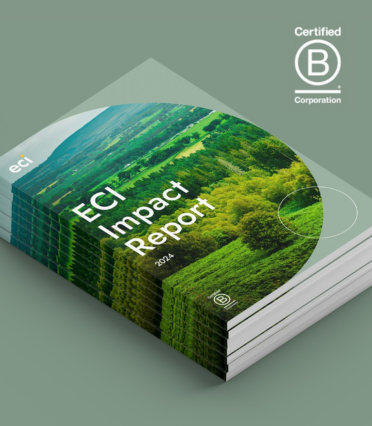ECI recently brought together tech leaders from across our portfolio as part of our networking forum. With Intechnica stating that they’ve seen a 70% increase in sell side tech-related due diligence in the last year, it’s far more likely that CTOs will go through this process at exit, so one of the key questions facing CTOs was how to prepare and get the most out of it?
We heard from both Dave Horton from Intechnica and one of the CTOs they diligenced, Dan Huddart from ECI portfolio company Avantia, to hear perspectives from both sides as to how CTOs and companies can get the most out of the process.
1. Do regular tech health checks and an exit readiness assessment ahead of exit
One thing Dan and Dave agreed on was that the last thing you want is to enter a DD process a few weeks out from a transaction, find that you don’t have all the evidence that the assessor is looking for, or even worse, that they identify a serious issue that you simply don’t have time to solve. These potential pitfalls are easily avoided by doing an exit-readiness assessment c. 12 months out from exit or (as exit timing is often fluid), regular “health-checks” throughout the investment period that applies the investor lens to technology.
Dan said it was important to start gathering proof points ahead of time, because showing history and consistency is often the best way to demonstrate good operational management. He used examples of risk management and change management. Knowing you do this well is not the same as having some good evidence of where it has worked, which if you remember to log them over time is a simple exercise, as opposed to digging them out at the 11th hour.
Both Dan and Dave talked about how while you may get “diligenced” by other parties e.g. customers or suppliers, the perspective taken in an exit focussed exercise is quite different, and so the evidence you need to present is also different.
These health-checks also flag issues that can be fixed ahead of time, which is why it’s always better to be done sooner rather than later. If there is an issue, such as open-source vulnerabilities, you would always prefer to have a year or two to resolve those issues.
Doing a health-check ahead of time gives you an opportunity to practice explaining and selling your technology story. The health check assessor will play back what they feel the key strengths of your tech capabilities are, so you can hone and improve your message
2. Draw your business on one slide and highlight key messages; linking strategy and technology
Dan feels that the best way to start a DD exercise is to help an assessor quickly understand your business, what assets it has, and how it creates value. One way he did this at Avantia was drawing the business, its applications, and how the tech drove business strategy, all on one slide.
His advice? Highlight what you want to talk about. If there’s part of your tech stack that is more impactful, make that box bigger. Highlight your proprietary IP in colour and grey out generic services. State the key messages you need them to remember. Dave at Intechnica said that for diligence providers trying to understand at pace your tech infrastructure and how it ties into business strategy, such a guide is invaluable and means they can start asking the right questions sooner.
Dan also said that any messages you want to get across should reflect and be reflected in messages from the rest of the business. His main technology overview slide had the same headers as the overall business strategy slide. Tech strategy should be inextricably linked to the overall business strategy, and the more that you can highlight that, the easier it is for DD providers and investors to understand how tech drives value creation.
3. Think carefully about who should be involved in diligence sessions
Dave at Intechnica highlighted that often during technical DD, there are different characters in the room. Some are an open book, some may turn into chameleons who try and give the answers that they think you want, some give far too much information and get lost in the detail, whilst some others rely too much on opinion and fail to explain the reasoning. If you are the CTO, part of your role is managing these different approaches – thinking about who will be most effective in the room, and which styles might need to be managed. Dan for example, discussed streamlining this process as much as possible; managing different styles is harder if you try and get every voice in the room. Pre-preparing material and having the CTO chair all meetings was Dan’s top tip to ensure consistency whilst still giving the assessors freedom to ask questions of team members.
Dave stated that this is something companies often get wrong. An introduction from the CTO which someone is able to live up to is a great start, it’s helpful for them and helps set the expectation for the DD provider. Where someone is in the room because they have the technical detail but they end up a little out of their depth, then the CTO needs to provide support, otherwise it isn’t a good use of their time or that of the DD provider, and often has a negative impact on that team member. Equally, the CTO needs to give the team sufficient freedom to speak. Understanding who needs to be in the room and helping them understand the process and prepare for it, will enable a much more valuable exercise.
4. Think about how to show team capability and development
Dave stated that whilst companies often think that the hardest thing to demonstrate in DD is the quality of the technical asset, actually the hardest thing to show is your team capability and development.
Documenting this ahead of time is helpful. For example, making sure you have an up-to-date org chart, with real titles and short descriptions highlighting what that person actually does. Effective measurement and reporting of the team isn’t something that can be created quickly, establishing the best approach for the team, and gathering the data takes time. An early heath-check will help highlight how your team looks to an external assessor. Dan also suggested building a development ladder to explain how career progression works within your organisation. Avantia also did the Great Place to Work Survey, as a useful way to benchmark themselves.
5. Don’t worry if there are things that are wrong
A totally clean DD report actually isn’t that reassuring, as it makes investors question the provider and if they have really got under the skin of the organisation – due to this, pulling the wool over the assessor’s eyes is counterproductive.
Dave also stated that it’s important to remember that the bar for top scores in technical DD is very high. Avantia is actually the only company in the last 18 months that they have given their highest ranking of ‘Differentiator’ to on the Digital Contribution scale (only 1% of businesses assessed achieve this). Go into the process with the right expectations – this isn’t about gold stars, this is about helping investors understand the journey technology is on within the organisation.
It’s important to remember, DD providers and investors are pragmatic about this too. They expect there to be things that need improving (and often see those areas as an opportunity for value creation). DD is a resource for them to understand the scale of the risk, what investment and changes might be needed over the next few years, and to have open and frank discussions about it. This is especially true for investors such as ECI who back growth companies – when you’re a fast-growth company chances are you will have some technical debt, you will be on a journey to invest in your tech infrastructure and team, and part of our role as your investor would be to help support you through that process. So, don’t panic! Remember that investors are looking to understand the journey rather than just looking for a clean bill of health.



